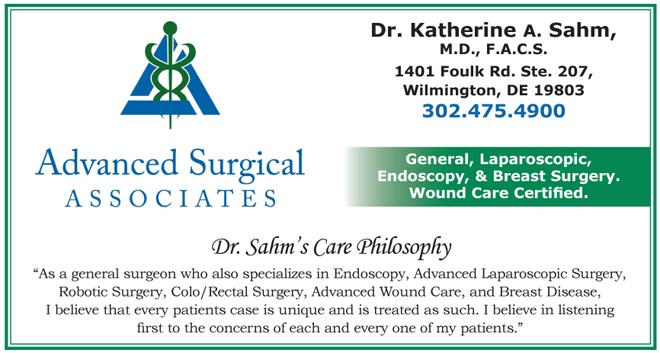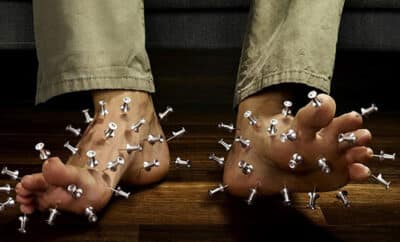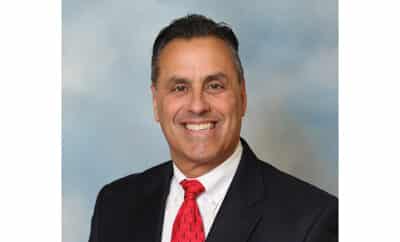What You Should Know About Hemorrhoids

By Dr. Katherine A. Sahm, M.D., F.A.C.S.
Hemorrhoids occur in everyone. An estimated 75% of people will experience enlarged hemorrhoids at some point in their lives; however, only four percent of people will go to a physician because of hemorrhoid problems. Hemorrhoids that cause problems are found equally in women and men. Treating enlarged hemorrhoids is important because they tend to get worse over time.
Hemorrhoids are an embarrassing subject for most patients but a very common problem. They are blood-engorged veins in the lower rectum (anal canal) that form tiny sacs when too much pressure is exerted on the veins serving the pelvic and rectal areas. Increased pressure can happen from straining during bowel movements, sitting on the toilet for long periods of time, chronic constipation, chronic diarrhea, eating a low-fiber diet, lifting heavy objects, obesity, standing or sitting for long periods of time, or pregnancy.
Diet is believed to have a big impact in causing and possibly preventing hemorrhoids. People who consistently eat a high-fiber diet are less likely to get hemorrhoids, while those who prefer a diet high in processed foods face a higher hemorrhoid risk. A low-fiber diet can cause constipation, which can contribute to hemorrhoids.
Types of Hemorrhoids:
External Hemorrhoids:
Are located underneath the skin that surrounds the anus. They can be felt when they swell and may cause itching, pain, or bleeding with a bowel movement.
Internal Hemorrhoids:
Are usually painless and become apparent because they cause bleeding with a bowel movement. They are located on the inside lining of the rectum and cannot be felt unless they are substantially enlarged, or prolapsed and push through the anus opening causing pain and itching.
Thrombosed Hemorrhoids:
Sometimes blood may pool in an external hemorrhoid and form a clot (thrombus) that can cause severe pain, and swelling. These types of hemorrhoids are very painful, tender, and require medical attention. If the pain is unbearable you should seek a physician’s help to remove the blood clot from the thrombosed hemorrhoid.
Symptoms of Hemorrhoids Can Include:
Bleeding that is often painless during bowel movements, leakage of feces and mucus, severe pain, swelling, and inflammation. All of this may seem embarrassing; however, it is important to talk with a qualified physician about any rectal bleeding. This should never be deemed to be normal. Hemorrhoids usually don’t cause serious problems, other things such as rectal polyps, cancer, or inflammatory bowel disease can cause bleeding as well. A procedure such as a colonoscopy or a rectal examination under anesthesia may be needed to determine the cause of the bleeding.
Mild pain, swelling and inflammation from hemorrhoids can be managed with simple fixes such as: topical over-the-counter creams or suppositories containing hydrocortisone or pads containing topical numbing agents that can provide relief. Such remedies should not be used longer than a week unless directed by a physician.
Taking a warm Sitz Bath several times a day can also be helpful. A Sitz Bath can be completed by using a plastic tub that fits over the toilet and are available in medical supply stores and pharmacies. You can also utilize a bathtub.
Ice is also an effective tool to utilize against swelling as well. Cold compresses on the anus can relieve swelling and also be an effective tool to relieve pain.
Softening and bulking up stool for easier passage is helpful so hydration and fiber are important. Be certain to drink eight, eight ounce glasses of water per day and other nonalcoholic beverages daily. Eating high fiber foods such as: fresh and dried fruits, vegetables, grains, and cereals are also important or you can take a fiber supplement such as Citrucel or Metamucil. In general, 20-30 grams of fiber per day is recommended, whereas the average American diet contains less than 15 grams of fiber. Please remember to drink plenty of water as you increase your fiber or you will cause constipation, which will only make matters associated with you hemorrhoids worse.
Hemorrhoids can be prevented by keeping the stools soft, regular exercise, eating a high fiber diet, drinking plenty of fluids; avoiding straining with bowel movements, and trying to avoid sitting for long periods of time, especially on the toilet.
With a history of symptoms, a qualified physician such as myself can begin diagnosis on the basis of a careful examination of the anus and anal canal. Although any physician should try his or her best to identify the hemorrhoids, it is perhaps more important to exclude other causes of hemorrhoid – like symptoms that require different treatment such as: anal fissures, fistulae, perianal skin diseases, infections, and tumors.
Despite the embarrassment, hemorrhoids should always be examined professionally. Getting a medical examination will help a physician to recommend the most effective treatment and will also rule out more serious causes for your symptoms.
You can schedule an appointment with Dr. Sahm for an evaluation by calling: 302-475-4900.
Dr. Sahm says…
I am a native Delawarean trained in minimally invasive surgery and general surgery. I have sought out further training in wound care and hyperbaric medicine and am certified in wound care. I served two tours as a forward surgeon in Iraq in 2008 and 2010. I am a participating breast surgeon at the Helen Graham Cancer Center. I enjoy getting to know my patients and their families and caring for their surgical needs.





